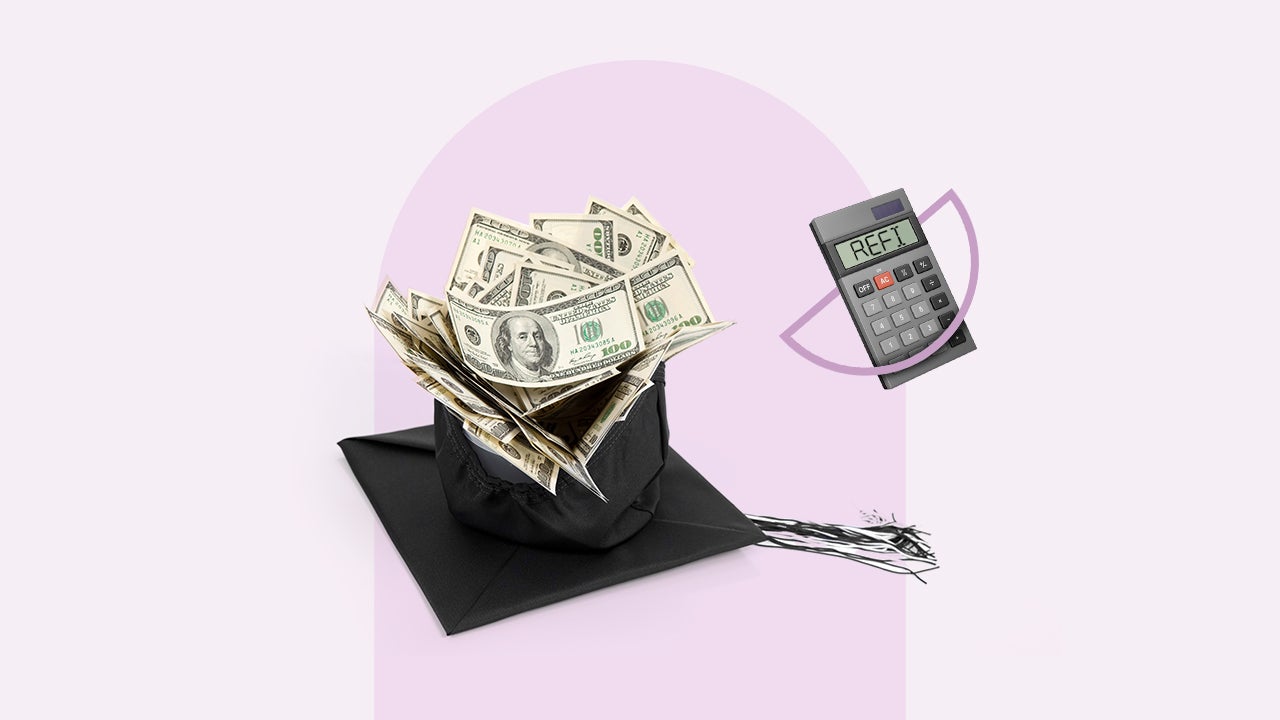What is student loan relief and how do you apply?

Key takeaways
- Multiple programs offer debt relief for federal student loans.
- Student loan cancellation, discharge and forgiveness vary based on requirements and loan types.
- Debt relief alternatives include refinancing or negotiation, but that might not help with federal loans.
If you’ve accumulated federal debt to finance your college or university education, you can take steps to reduce or eliminate what you owe.
You’ll need to know what kind of debt you have, what are available and what resources you qualify for to get student loan relief.
What is student loan relief?
Student loan relief, or student debt relief, is the umbrella term that covers myriad solutions to help reduce or eliminate what you owe if you carry a William D. Ford Federal Direct Loan (Direct Loan) or, in some cases, a Federal Family Education Loan (FFEEL). It falls into multiple categories based on eligibility, what’s covered and other factors.
| Cancellation | Discharge | Forgiveness | Deferment/Forbearance | |
|---|---|---|---|---|
| Description | Eliminates repayments due to job | Eliminates repayments due to extenuating circumstances | Forgives loan under certain situations/jobs | Temporarily pauses required student loan payments |
| Qualifications |
|
|
|
|
| Programs |
|
|
|
|
| How to Apply | Through loan servicer or school issuing loan | Through U.S. Department of Education | Through U.S. Department of Education | Through federal student loan servicer |
Student loan cancellation
As the term indicates, student loan cancellation means the remainder of the student debt you owe goes away. More often than not, cancellation is used with a process involving the Perkins Loan Program.
The Perkins Program issued loans to students in financial need and was discontinued in 2017. However, f you had this type of loan and worked in a qualifying government or non-profit job for a time, you could cancel the remainder of that debt.
Jobs that might qualify for Perkins Loan Program cancellations include:
- First responders
- Health care workers
- Teachers
- Volunteer programs (AmeriCorps or Peace Corps)
To determine eligibility for a Perkins Loan cancellation, contact the school that issued the loan or that school’s loan servicer.
Student loan discharge
Student loan discharge is similar to student loan cancellation/forgiveness in reducing or eliminating what you owe. A student loan discharge might be granted if you’re unable to pay your loan because of circumstances outside your control.
These might include:
- Borrower defense loan discharge program: You enrolled in a school based on misleading or false information.
- Disability discharge: You can show proof of permanent or total disability with documentation from the U.S. Department of Veterans Affairs, the Social Security Administration or an authorized medical professional.
- Discharge due to bankruptcy: Bankruptcy can be used to discharge student debt under certain circumstances.
- Discharge due to death: You die, or a student whose education is financed through a parent PLUS loan dies.
- School closure: Your school closed while you were enrolled or within 180 days of approved withdrawal.
Student loan forgiveness
Student loan forgiveness means your loan might go away under certain conditions. One of the more common types of debt relief in this category is the Public Service Loan Forgiveness program.
Under PSLF parameters, your qualifying federal Direct Loans could be forgiven if you’ve:
- Made 120 qualifying loan payments (generally 10 years) AND
- Work or have worked in public service roles like state or federal government jobs, the military or some nonprofit organizations
The U.S. Department of Education offers a PSLF Help Tool to help you find out if you’re eligible.
Other loan forgiveness options include:
- Medical school forgiveness programs
- Military loan forgiveness
- Nurse Corps loan repayment program
- Teacher loan forgiveness
Loan deferment and forbearance
When you apply for a deferment or forbearance, your loan doesn’t go away. Instead, you’re pushing the “pause” button on what you owe. This debt relief method is generally used if you’re experiencing financial hardships or illness that might prevent you from making timely payments on what you owe.
“Deferment” and “forbearance” are also frequently interchangeable, but they aren’t the same in the following ways:
- Eligibility: While deferment has specific requirements, forbearance is up to your loan servicer’s discretion.
- Interest accrual: Interest continues during forbearance periods, but some types of deferment might eliminate interest.
- Length of time: Forbearance periods last 12 months at a time; some deferments can span years.
Type of deferment or forbearance programs include:
- Cancer treatment deferment
- Economic hardship
- In-school deferment
- Military service and post-active duty service deferment
- Parent PLUS borrower deferment
- Student loan debt forbearance
- Unemployment deferment
You’ll apply for deferral or forbearance through your federal loan servicer.
What to consider when looking for student loan relief
Applying for student loan relief is your first step, but applying doesn’t mean that you can stop payment. Doing so could cause more problems, such as a damaged credit score. Continue those payments while your application is being reviewed.
Also, be wary of scams. Plenty of debt relief companies are reputable. Others, not so much. Look out for red flags like:
- Asking you to sign a power of attorney
- Promising instant loan forgiveness
- Requesting your FSA ID password
- Requiring an upfront payment before doing any work
- Showing fake Department of Education credentials
If you encounter any of the above, be sure to move on. Report suspected scam operations to your student loan servicer, the Federal Trade Commission or your state’s attorney general.
Biden-Harris student debt relief
Since becoming president, Joe Biden has made student debt relief an important issue in his administration despite pushback from several sources (including a U.S. Supreme Court ruling in 2023 against the administration’s one-time loan forgiveness plan).
Still, the administration has developed workarounds to help provide student debt relief.
In August 2023, the Biden-Harris Administration launched its Saving on a Valuable Education (SAVE) Plan, an income-driven repayment plan that replaced the Revise Pay as You Earn (REPAYE) Plan.
The SAVE Plan’s benefits include:
- An increase of the income exemption from 150% to 225% of the poverty line.
- Elimination of 100% of remaining monthly interest after borrowers make a full, on-time monthly payment.
If you’ve been on the REPAYE Plan, you were automatically moved to the newer SAVE plan.
In late May 2024, the Biden-Harris Administration announced it would cancel an additional 160,000 student loans through a combination of existing programs. According to the U.S. Education Department, this most recent effort will cancel $7.7 billion in federal student loans.
The latest relief will go to the following borrowers:
- 54,000 enrolled in the new IDR (SAVE Plan)
- 39,000 enrolled in earlier income-drive plans
- 67,000 eligible through the PSLF program
For the latest information about the administration’s plans and announcements (and to see if you qualify), visit the Federal Student Aid website.
Other options for student debt relief
The options discussed above are for federal loans. But what if you’re financing your higher education with private loans rather than through the federal government? Or, what if you don’t qualify for any of the available student debt relief programs?
If so, you can consider the following options:
- Deferment or forbearance: Similar to federal loans, deferment or forbearance temporarily halts your payments on your private student loan. However, interest doesn’t stop accruing under forbearance arrangements. Furthermore, neither of these is a long-term solution, as you could pay more when the forbearance/deferment period ends.
- Refinance: If you have good credit or a trusted co-signer, refinancing your student loans could help you consolidate multiple student loans at a lower interest rate. However, you could lose federal student loan benefits or protections if you decide on the refinancing route.
- Talk to your lender: If you’re struggling to repay a private loan or need assistance, contact your loan servicer. The lender can often offer viable solutions that might be helpful, including temporarily lowering your loan payments or shifting your loan to an interest-only payment plan.
The bottom line
While the student debt you owe might seem insurmountable, solutions are available to reduce or eliminate what you need to pay. Depending on your loan, profession and other requirements, you could qualify for specific debt relief programs.
Start with researching your options or contact your loan service provider. Research your loan type and employment situation. With this information in hand, you could be on your way to finding relief for your student debt.
You may also like

What is student loan refinancing and how does it work?

What is a private student loan?

What is student loan deferment?



